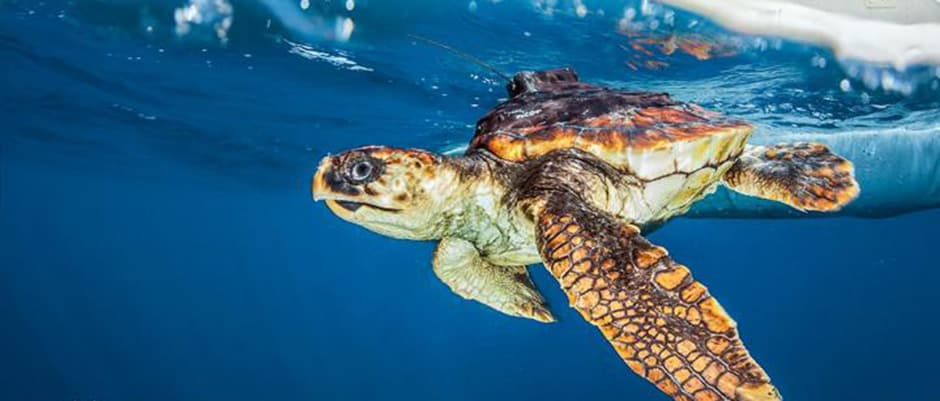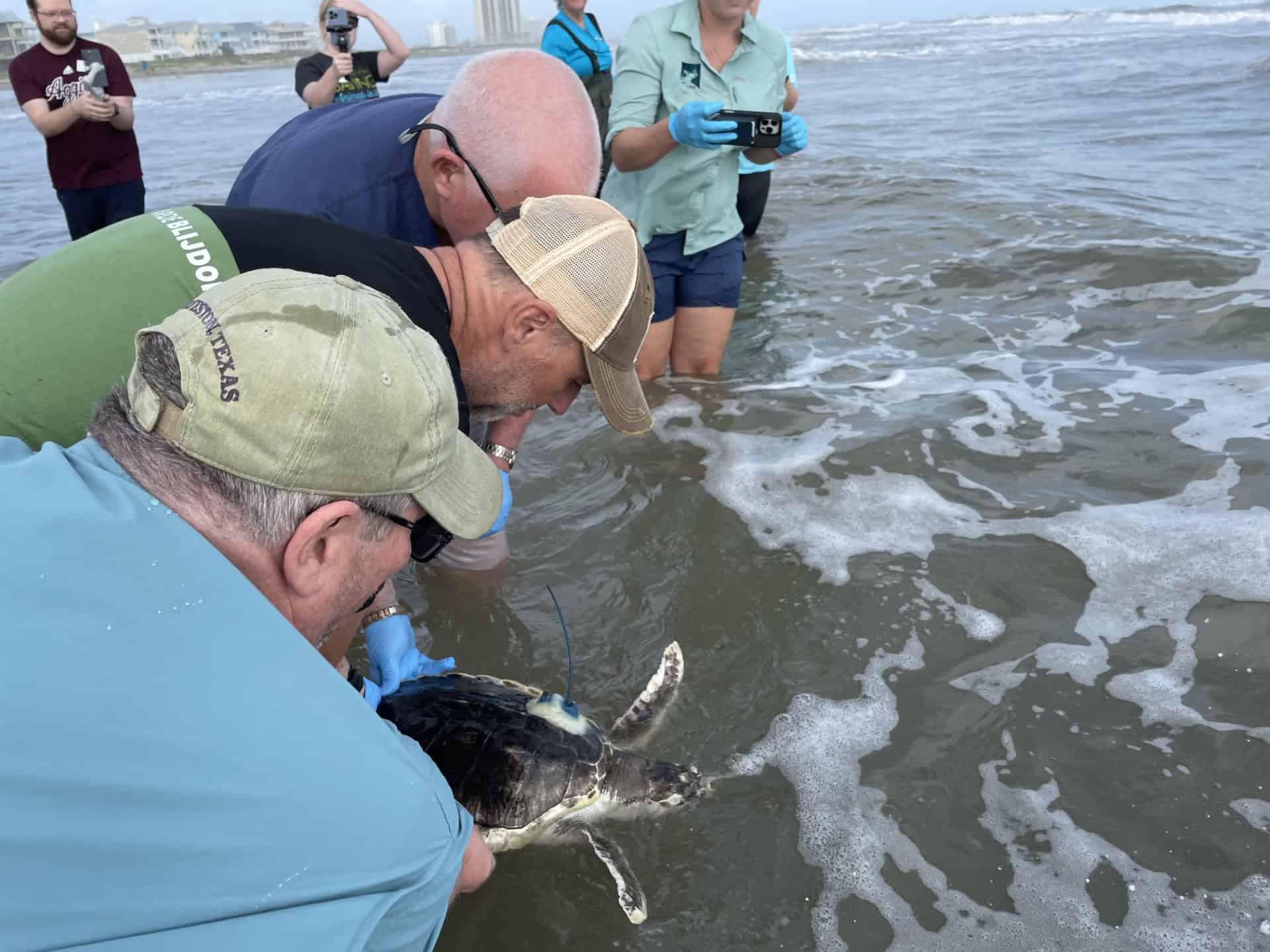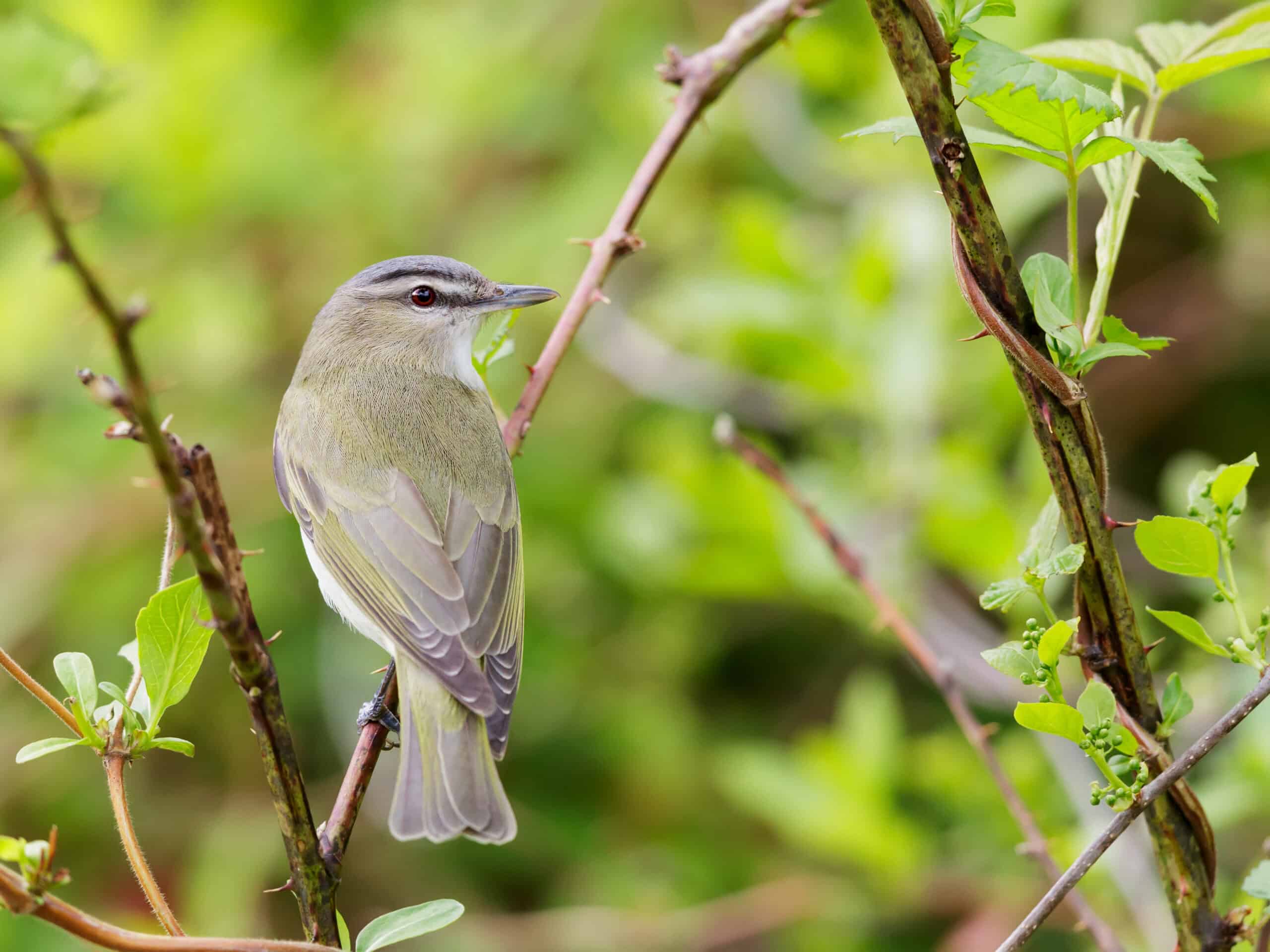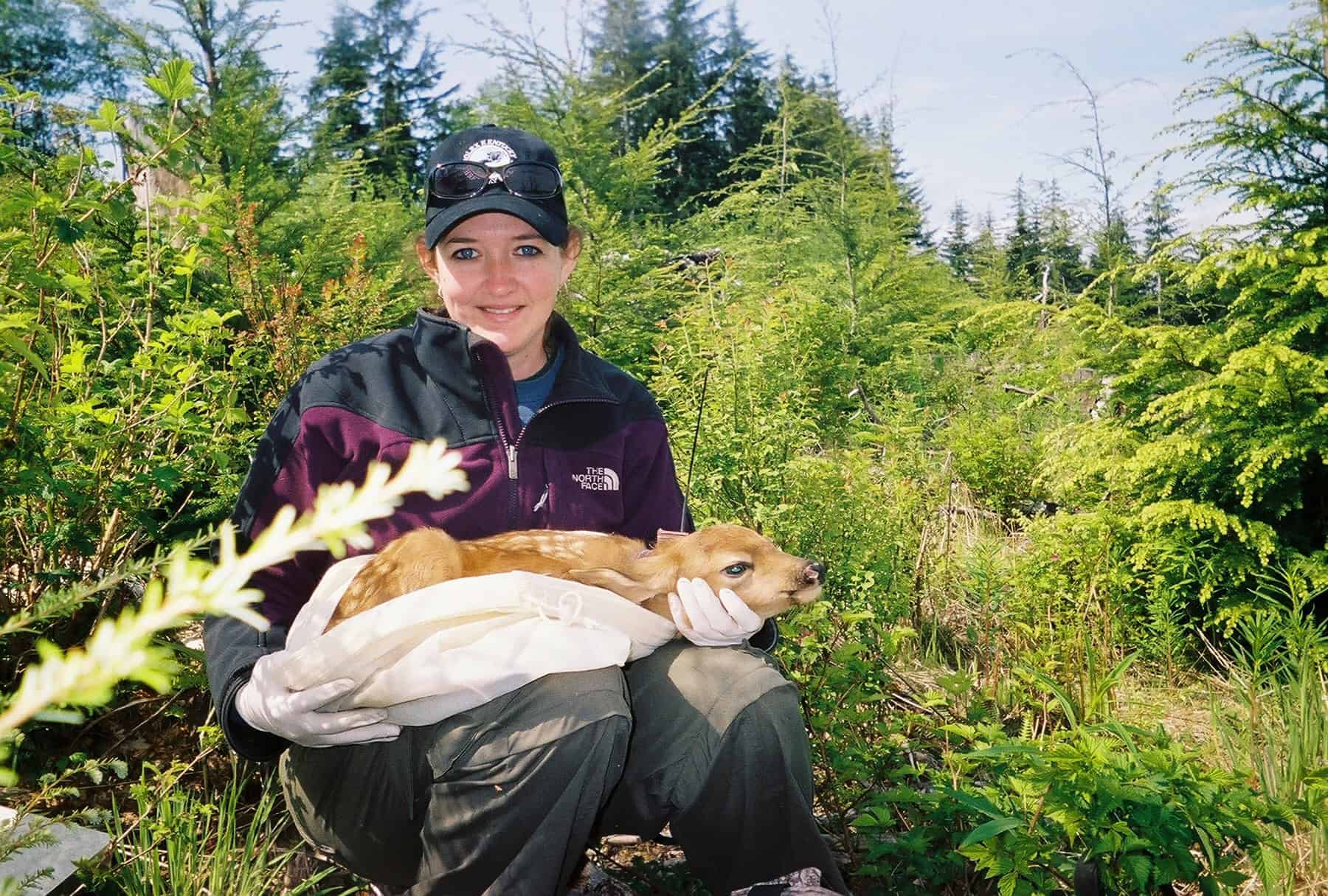Share this article
First Tagged Loggerhead Turtle Released Off West Coast
Government scientists have tagged an elusive sea turtle species with a satellite transmitter for the first time off the coast of southern California.
The information they gain while tracking the loggerhead turtle (Caretta caretta) could give vital information to ecologists and marine biologists about the habitat and life cycles of these elusive reptiles.
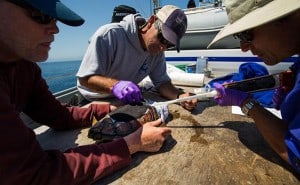
NOAA Fisheries scientists Scott Benson (left), Jeff Seminoff, and Tomo Eguchi attach a layer of synthetic rubber to a juvenile loggerhead sea turtle. Next they will attach a satellite transmitter, the first ever to be attached to a loggerhead off the West coast of the United States.
Image Credit: Ralph Pace
“Learning more about what they do, where they go and where we can find them is key to understanding more about their biology,” said Tomo Eguchi, an ecologist with National Oceanic and Atmospheric Administration Fisheries.
Loggerhead turtles were divided into nine distinct populations throughout the world in 2011, with five being considered endangered under the Endangered Species Act and four given threatened listings. The North pacific population that Eguchi was working with for the tagging is endangered.
The North Pacific population that the tagged reptile belongs to generally nests on East Asian shores —particularly on beaches in Japan. After they are born, Eguchi said many juvenile turtles strike out across the ocean, congregating roughly around Hawaii and the Central Pacific or off the coast of Baja California in Mexico. The turtles will spend around 25-30 years in these waters until returning to East Asia to mate and nest.
But during el Niño periods, the turtles often turn up off the coast of California as well. Fishermen primarily targeting thresher sharks and swordfish sometimes end up pulling in loggerheads as bycatch, which prompted NOAA in 2003 to ban drift gillnet fishing during el Niño conditions in order to protect the turtles.
Perhaps due to warming conditions in the ocean, a recent marine mammal survey undertaken in the California current system occasionally found some juveniles in patches of beach in Southern California.
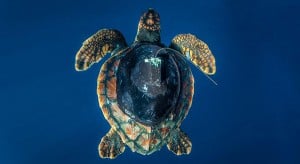
The first loggerhead sea turtle ever to be tagged with a satellite transmitter, shortly after being released.
Image Credit: Ralph Pace
“The whole thought about where these loggerheads were coming from shifted in 2013,” said Eguchi, who added that it’s very difficult to study loggerheads because of their relative size. In fact, the juvenile they recently tagged is about as big as a dinner plate.
“It’s kind of catch-22 because you have to find them first, but you want to do surveys where they are.”
Loggerhead research was given a significant boost this spring when a Coast Guard boat picked up a turtle that appeared to be in distress between Catalina Island and the mainland and brought it back to the Aquarium of the Pacific in Long Beach, Calif. Eguchi said that the turtles in this area hadn’t ever been tagged due to the difficulty in finding a turtle to work with — the operation could take days cruising around in a chartered boat and still be unsuccessful.
“We have to spend our money wisely,” Eguchi said.
Veterinarians at the aquarium examining the turtle decided it was healthy and fit for release, but the loggerhead presented a unique opportunity for NOAA. After the turtle spent some time in the aquarium, Eguchi and other researchers tagged it and set it free 50 miles off the coast of San Diego, Calif.
The information is already piling in and Eguchi said the turtle appears to be heading south. Though only a single individual, he hopes the loggerhead will reveal patterns more common to others of the population.
“We’d like to know where it goes and we’re hoping that it will tell us the habitat it likes with respect to temperature or productivity or current.”
This could eventually help NOAA Fisheries scientists develop future protected zones in order to limit interactions between fisheries and turtles, according to NOAA scientists Jeff Seminoff, also involved in the tagging and release.
“If it turns out that the turtles like different habitat than swordfish, or if they use the same habitat but at different times, then there might be a way to allow fishermen to fish while still keeping turtle hotspots protected,” Seminoff said in a release. “It would be a win-win.”
Header Image: ©Ralph Pace



